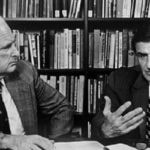TRIZ Method of Problem Solving explained

TRIZ Method of Problem Solving: this article explains the TRIZ Method of Problem Solving, developed by Genrich Altshuller in a practical way. Next to what it is, this article also highlights the founder, the reason of it’s excistenc, and the five basic principles and the 40 principles including practical examples. After reading you will understand the basics of this powerful problem solving tool. Enjoy reading!
What is TRIZ Method of Problem Solving?
In the 1980s the Russian engineer Genrich Altshuller developed the TRIZ theory which is an acronym for Teorya Resheniya Izobreatatelskikh Zadatch. The literal translation is: “theory of inventive problem solving”.
The most important result of the research was, that the evolution of technological progress follows a number of predictable patterns. It is an innovative way of looking at problems and solutions.
TRIZ Method of Problem Solving is not a coincidence
As a patent examiner Altshuller refused to accept the fact that inventions and creativity were random or chance acts.
His goal was to develop a standard process for successful innovations. This is how he discovered that 98% of patented innovations were based on an already known principle. Only 2% of all patents were really new innovations.
The TRIZ Method is universally applicable!
TRIZ starts from a number of principles and processes of innovation that are universally applicable. Large multinationals such as Hewlett-Packard, Boeing and Samsung have used the TRIZ method to develop new products, optimize processes and gaining a better understanding of developments and trends in the market for decades.
TRIZ has become an umbrella that covers a host of inventive concepts, tools and processes that are often used to solve difficult problems.
The TRIZ Method of Problem Solving: the basic principles
To arrive at improvement, the TRIZ method uses 5 basic principles and 40 inventive principles. It forces us to look at problems differently.
1. The ideal end result
Thinking out of the box is a good principle to achieve an ideal end result. The TRIZ Method of Problem Solving encourages people not to be satisfied too quickly with the solutions to a problem, but to be always open to even better ideas.
2. Less is more
There is not always a need to invest a lot of money to arrive at the best idea. Innovation can be realized with existing materials and sometimes the solution is close at hand.
3. Solutions already exist
The TRIZ Method of Problem Solving helps people define problems in terms of frequently used and general principles, which enables searching for solutions outside their primary field of expertise.
4. Search for fundamental contradictions
Innovating equals problem solving, which mostly exist of contradictions. When these contradictions are defined, the solution is often imminent.
5. Lines of evolution
Systems do not evolve randomly. There are fixed patterns that make the evolution of technology predictable,
The TRIZ method 40 inventive principles
Genrich Altshuller arrived at 40 inventive principles to solve complex problems. According to the TRIZ Method of Problem Solving, each innovation can be traced back to the application of one or more of these principles.
To arrive at the right application of the 40 inventive principles, it is important to formulate the right contradiction very clearly with respect to what should be improved and what should not get worse.
After this, the problem solving process can be started up.
1. Segmentation
Segment the product into independent parts as a result of which a useful or damaging quality is isolated (shop in shop).
2. Extraction
Extract a disturbing part or property from an object and/or single out the only necessary part or property (sugar free biscuits).
3. Local quality
By changing the structure of products in a specific place, the desired product is created (cap on milk carton).
4. Asymmetry
Change the shape an object from symmetrical to asymmetrical (trendy kettle).
5. Merging
By merging functions, properties or parts of a product in space or time, a new or unique result is created (day cream with UV filters).
6. Universality
Make a product more uniform, universal, extensive and multi-functional (hair-dryer).
7. Nested doll
Place multiple objects inside others (paper insulated coffee cups).
8. Counterweight
Compensate the negative property of the product by combining it with another object that provides a lifting force (hovercraft).
9. Preliminary counteraction
Analyse beforehand what can go wrong and take preliminary counteraction (sun milk).
10. Preliminary Action
Place object before it is needed so that it can go into action immediately from the most convenient location for their delivery (Emla numbing cream).
11. Cushion in advance
Because nothing is perfectly reliable, prepare emergency measures in advance (metallic car coating – anti-contamination).
12. Equipotentiality
Eliminate tension in or around an object’s environment (cling film).
13. The other way round
Implement an opposite or reverse action (reversible clothing).
14. Spheroidality
Replace linear parts with spherical parts (round brush head for hoover).
15. Dynamics
Make a product or property temporarily flexible or flexible for a short while (possibility to buy a car with unique stripes).
16. Partial or excessive actions
Use a little more than necessary or use a little less of the same product (high active enzymes in laundry detergents).
17. Transition into another dimension
Change the orientation of a linear product from vertical to horizontal etc. Use a different dimension or multi-storey arrangement (layered cake).
18. Mechanical vibrations
Use vibrations to achieve a positive effect (massage cushion).
19. Periodic Action
Instead of continuous actions use periodical or pulsating actions (electric toothbrush).
20. Continuity
Carry on work continuously and eliminate all idle or intermittent actions (boarding pass such as e-tickets).
21. Rushing through
Conduct a process at high speed to prevent errors (DSL internet versus fibre optic internet).
22. Blessing in disguise
Use harmful factors to add value. (3M yellow post-its with low tack adhesive).
23. Feedback
Introduce feedback by using output as a means of input, output audits can be improved (telephone number of service desk on packaging).
24. Intermediary
Merge one object temporarily with another (oven bag for cooking chicken).
25. Self-service
Make an object serve itself by performing auxiliary helpful functions (self-checkout at supermarkets).
26. Copying
Instead of a valuable or fragile object, use inexpensive copies (zirconia jewellery).
27. Cheap objects
Use inexpensive and/or disposable objects to reduce costs (disposable cutlery).
28. Replace mechanical system
Replace a mechanical system with a different shape, action or function (folding electric bikes).
29. Pneumatics and hydraulics
Replace solid parts of an object with pneumatic (air) or hydraulic (water) parts (barber chair).
30. Flexible shells
Replace traditional constructions with flexible shells (water repellent, breathable sports clothing).
31. Porous materials
Make properties of objects, systems or materials porous (read-to-use iodine band-aid).
32. Colour changes
Change the colour or other optical property of an object (Polaroid sunglasses).
33. Homogeneity
Make objects interact with a given object with identical properties (two-component adhesive).
34. Discarding and recovering
By making objects or parts of objects that have fulfilled their usefulness go away and by subsequently restoring them, they can be reused.(reusable make-up packaging)
35. Parameter changes
Change the properties of an object (steam shower).
36. Phase transitions
Use phenomena occurring during chemical phase transitions (pregnancy test).
37. Thermal expansion
Convert heat energy to mechanical energy (solar panels).
38. Strong oxidants
Reinforce oxidative processes to enhance a function or process (cryotherapy for warts).
39. Inert atmosphere
Replace a neutral environment to support a desired function (vacuum wine saver pump).
40. Composite materials
Change from homogeneous to composite materials (thermos flask).
The TRIZ Method of Problem Solving is all about Creativity
The TRIZ Method of Problem Solving stimulates creativity and the 40 inventive principles could inspire product development. Compare the TRIZ method to a brainstorming session in which participants are encouraged to emerge with ideas. The effects of the session are limited because only those attending the session make creative contributions.
The creative ideas of those not attending the session are not taken into consideration. TRIZ Method of Problem Solving, on the other hand, challenges us to look at things differently and it enables people to use previous experiences and knowledge gained in global innovations.
It’s Your Turn
What do you think? Is the TRIZ Method of Problem Solving still applicable in today’s business companies? And if so, how do you use it and what are the general results and learning lessons? Are the basics principles the same or are there new ones?
Share your experience and knowledge in the comments box below.
More information
- Altshuller, G., Shulyak, L., & Rodman, S. (2002). 40 Principles Extended Edition: Triz Keys to Technical Innovation. Technical Innovation Center, Inc.
- Altshuller, G., & Shulyak, L. (1996). And Suddenly the Inventor Appeared: Triz, the Theory of Inventive Problem Solving. Technical Innovation Center, Inc.
- Chen, J. L., & Liu, C. C. (2001). An eco-innovative design approach incorporating the TRIZ method without contradiction analysis. The Journal of Sustainable Product Design, 1(4), 263-272.
How to cite this article:
Mulder, P. (2016). TRIZ Method. Retrieved [insert date] from ToolsHero: https://www.toolshero.com/problem-solving/triz-method/
Published on: 12/09/2016 | Last update: 12/23/2023
Add a link to this page on your website:
<a href=”https://www.toolshero.com/problem-solving/triz-method/”>Toolshero: TRIZ Method</a>













3 responses to “TRIZ Method of Problem Solving explained”
Congratulations! An excellent article! Very well built! Once again Congratulations! Teach “Innovation Management in Education at the Christian University” Dimitrie Cantemir, Bucharest, Romania. In the course support we included a dedicated TRIZ module. Sincerely, Univ. Lecturer. Remus CHINA
This is really good article and would like to learn more. Looks very much useful in our industry.
Thank you for your comment, Bala Krishna.